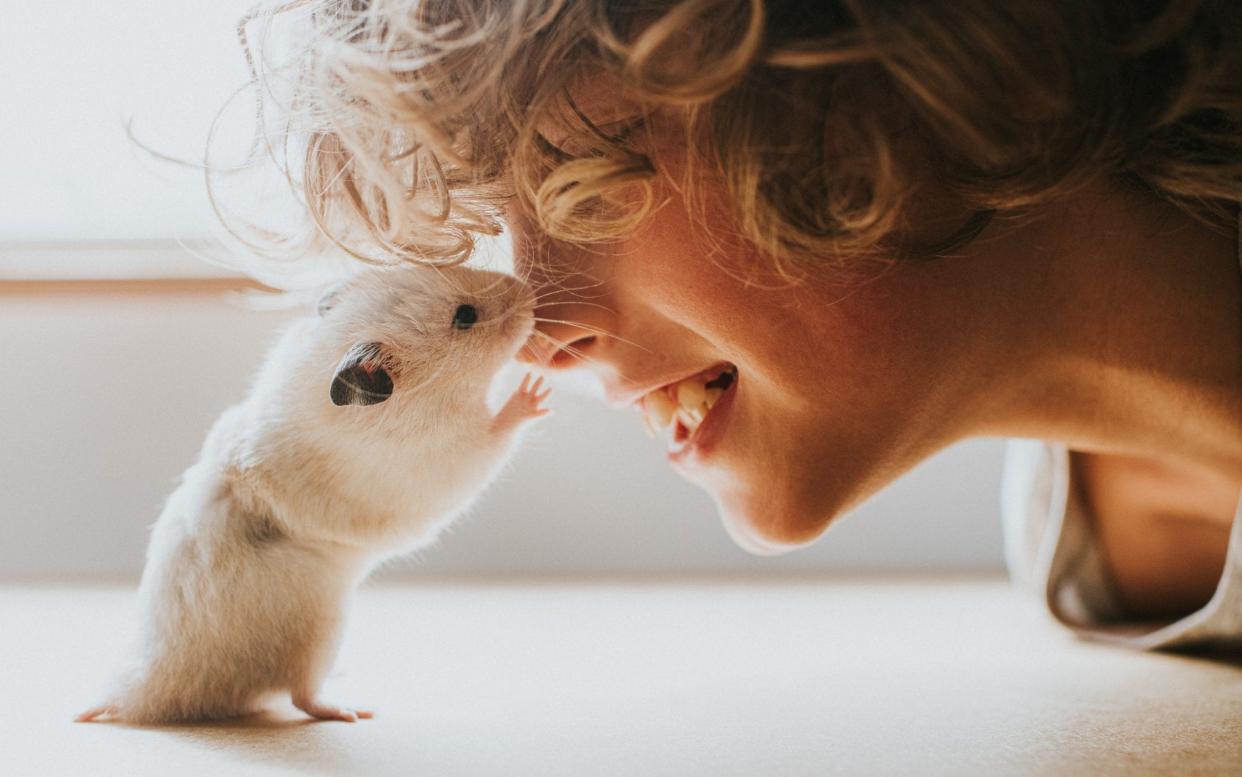How your choice of pet could impact your child’s allergy risk

The type of pet a family owns may impact what allergies a young child develops, a study has suggested.
A young child that lives in a house with an indoor dog, for example, is less likely to be allergic to eggs, milk and nuts by 16, 16 and 28 per cent respectively.
Having a cat is also found to benefit children. Egg, wheat, and soybean allergies were found to be less common in three-year-old children if they lived with a cat, for example.
However, a hamster was found to almost double the likelihood of a child being allergic to nuts. Hamsters often eat nuts and it is known that exposure to nuts via the skin of infants can lead to allergies developing.
Experts now recommend exposing children to nuts as a food product before six months of age and to avoid skin contact with nuts. Keeping hamsters away from children and hand-washing after handling a hamster is vital, scientists say.
Previous studies have shown that dogs reduce the prevalence of child allergies. This study adds to that belief, while also shedding light on links between specific allergies and pets.
Data from more than 66,000 children in Japan found that an indoor dog and cat both reduced the likelihood of a child having food allergies. The link was found for children exposed to the pets both as an infant and as a foetus pre-birth.
A more detailed look revealed a link between certain pets and specific allergens. Experts have long thought that the increasingly sanitised environment that children grow up in is leaving them vulnerable to health conditions in later life, as their body is not exposed to various bugs, foods and other allergens.
The so-called hygiene hypothesis encourages parents to expose their child to a myriad of things to train their immune system early in life and prevent allergies developing later on.
“Our findings suggest that exposure to dogs and cats might be beneficial against the development of certain food allergies, thereby alleviating concerns about pet-keeping and reducing the burden of food allergies,” the scientists from Fukushima Medical University wrote in their study, published in Plos One.
“We found that dog or cat exposure only during the foetal period has no significant effect on the incidence risk of food allergies.
“This finding suggests that continued dog or cat ownership after birth may be beneficial in reducing the risk of food allergies.”
'Window of opportunity' to curb peanut allergies
The reason pets reduce the risk of allergies in children remains unknown, but scientists have some theories.
Alterations to the gut microbiome is one hypothesis, with others including that the pet may boost a child’s endotoxin levels, which protect against allergens.
A recent study from King’s College London found that giving children peanut butter when they are between four and six months old would reduce the amount of peanut allergies at a population level by more than three-quarters.
This four to six-month period has been dubbed the “window of opportunity” to curb peanut allergies.
“It does look as if the epidemic of peanut allergy we’ve had in the UK is because we haven’t been feeding infants and small children peanuts,” said study author Graham Roberts, professor in paediatric allergy at the University of Southampton.

